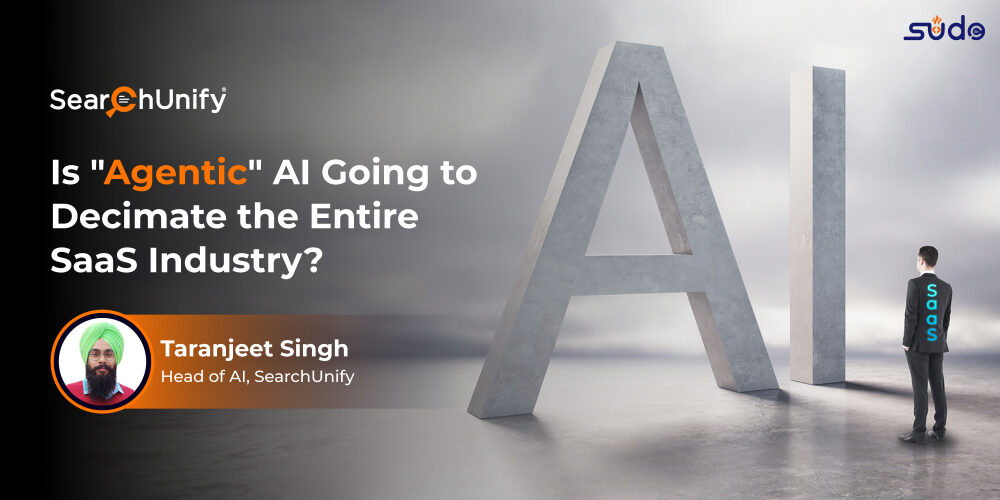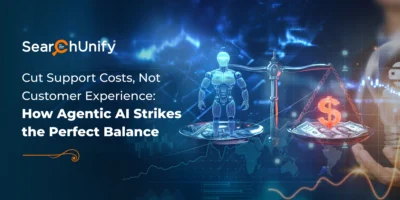
Agentic AI represents the next frontier in artificial intelligence, enabling autonomous systems to think, plan, and act proactively. Its potential to disrupt the SaaS industry is monumental, poised to fundamentally transform traditional models while raising questions about the survival of existing paradigms.
This disruption isn’t purely destructive—it’s dual-edged. Agentic AI offers unprecedented efficiencies and capabilities, but its transformative power could also render outdated models obsolete, leading to what some might term “decimation.”
In this blog, we’ll explore the challenges plaguing traditional SaaS, how Agentic AI addresses these issues, its limitations, and the hybrid path forward to ensure evolution, not extinction.
But who are the players driving this transformation? Enter agents—autonomous entities powered by Agentic AI that perform specific roles like strategizing, ideating, and automating. Think of them as the intelligent collaborators redefining how SaaS platforms operate. Let’s meet them.


1. Challenges in the Current SaaS Models
Customization & Scalability Issues
Traditional SaaS platforms excel at providing standardized solutions but often falter in customization. Adapting SaaS for diverse use cases requires significant engineering effort, driving up costs and timelines.
- Scaling SaaS platforms from small user bases to millions of users introduces bottlenecks in performance optimization, infrastructure management, and resource allocation.
- Post-maintenance challenges arise as updates to accommodate new use cases inadvertently introduce system instability.
Time-Intensive Proof of Concepts (PoCs)
Developing PoCs in SaaS environments is notoriously slow.
- Building prototypes often takes months, delaying the validation of ideas and giving competitors a head start.
- Teams invest substantial effort in manual research, resource procurement, and integration testing before a concept sees the light of day.
Human Limitation in Ideation
Innovative SaaS ideas often hinge on human ingenuity, but manual research and brainstorming are time-intensive and prone to biases.
- Exploring the full potential of market opportunities is limited by the time and cognitive bandwidth of human teams.
- Ideation remains reactive, rather than predictive, often lagging behind emerging trends.
2. How Agentic AI Addresses These Challenges
Automation of Ideation
Agentic AI introduces autonomous agents that act as strategists or “co-founders,” rapidly generating and validating ideas.
- These agents simulate brainstorming sessions, analyze market trends, and evaluate potential solutions in real-time.
- Example: A SaaS company deploying an AI strategist could ideate and validate three POCs in weeks rather than months.
Technical Insight: Large Language Models (LLMs) such as GPT-4 leverage reinforcement learning to refine their understanding of industry-specific challenges, delivering ideation tailored to business contexts.
SearchUnify Agent Helper exemplifies how Agentic AI can serve as a virtual collaborator, providing agents and support teams with contextual recommendations and actionable insights. This empowers teams to brainstorm, test, and iterate ideas faster while maintaining focus on high-priority tasks. Additionally, Knowbler complements this process by streamlining knowledge creation, ensuring that every validated idea is effectively documented and made accessible across the organization.
Natural Language Interfaces (NLIs)
NLIs powered by Agentic AI eliminate language and technical barriers, creating a more intuitive way for users to interact with SaaS platforms.
- Users can retrieve complex data insights by asking plain-language queries.
- Example: Asking “How much revenue have we lost due to system downtime this year?” prompts the AI to execute SQL queries and deliver actionable insights.
Technical Insight: Transformer-based architectures enable NLIs to parse natural language and convert it into database queries, bypassing traditional ORM layers and reducing engineering dependencies.
Optimizing Data Retrieval
Agentic AI automates the creation of complex data queries, speeding up decision-making and reducing reliance on technical expertise.
- SaaS platforms enhanced by Agentic AI can fetch multi-dimensional insights, from operational metrics to customer feedback analysis.
Technical Insight: Models like Azure OpenAI GPT use embedded embeddings to map structured and unstructured data, allowing seamless data extraction and visualization.
Efficiency in Software Interactions
Agentic AI simplifies repetitive and labor-intensive tasks in software development:
- Automatically generates macros, SQL queries, and unit tests.
- Accelerates test case generation and debugging processes.
Technical Insight: AI tools like Copilot analyze millions of GitHub repositories to predict and auto-generate boilerplate code, reducing developer workload.
For enterprises aiming to optimize workflows, SearchUnify Virtual Assistant (SUVA) simplifies user interactions with intelligent automation. With advanced features like real-time query handling and case creation within the chatbot window, SUVA minimizes time-intensive manual tasks. It supports both users and employees, making processes more intuitive and efficient. When paired with the Agentic Self-Service Hub, organizations can leverage conversational AI to enhance user engagement and foster a culture of self-reliance.
3. The Limitations of Agentic AI in SaaS Development
Complexity in Full-Scale Ecosystem Development
While Agentic AI excels in solving discrete tasks, orchestrating an entire SaaS ecosystem is a far greater challenge.
- SaaS systems rely on a complex web of microservices, APIs, and layered infrastructures that require nuanced human intervention.
- Full-scale system design and architectural decisions remain beyond the current scope of AI.
Lack of Deep Technical Understanding
AI models, despite their capabilities, often lack contextual understanding.
- Overreliance on AI for coding or decision-making can lead to inefficient code, suboptimal solutions, or even system vulnerabilities.
- Example: AI-generated algorithms may solve immediate problems but fail to account for edge cases that experienced engineers would foresee.
Vendor Lock-in Risks
Leveraging platforms like OpenAI or Azure OpenAI comes with risks:
- API limitations and high costs may restrict scalability.
- Sensitive data shared with third-party vendors raises security and compliance concerns.
4. The Road Ahead: Augmenting, Not Replacing, SaaS
The Role of Agentic AI in SaaS Evolution
Agentic AI has the potential to complement, rather than replace, traditional SaaS development processes.
- Enhances ideation cycles, accelerates development timelines, and optimizes repetitive tasks.
- Use cases include AI-powered marketing analytics, customer support bots, and predictive maintenance tools.
Building Hybrid Models
The future of SaaS lies in hybrid models that combine Agentic AI’s efficiency with human oversight.
- AI handles repetitive or computational tasks, while humans focus on strategic planning and creative problem-solving.
- Example: Automating code generation for routine tasks while leaving critical architectural design to engineers ensures reliability and scalability.
Technical Recommendation: Organizations should adopt AI governance frameworks to ensure the ethical and efficient use of Agentic AI within SaaS environments.
The true power of AI lies in its ability to augment human expertise, as evidenced by SearchUnify Cognitive Search and SearchUnifyGPT™. By integrating advanced LLMs with enterprise search capabilities, these solutions ensure that users can access relevant information faster. This hybrid approach enhances customer support, marketing, and sales while addressing scalability challenges in SaaS ecosystems.
Conclusion
Agentic AI is reshaping the SaaS industry, offering solutions to long-standing challenges in ideation, customization, and scalability. While its transformative potential is immense, its limitations highlight the need for a balanced approach that combines AI’s capabilities with human expertise.
Rather than fearing “decimation,” the SaaS industry should embrace Agentic AI as a catalyst for evolution. By leveraging this technology to augment existing workflows and strategies, businesses can unlock new growth opportunities and remain competitive in a rapidly changing landscape.
Are you ready to integrate Agentic AI into your SaaS roadmap? The future awaits.










